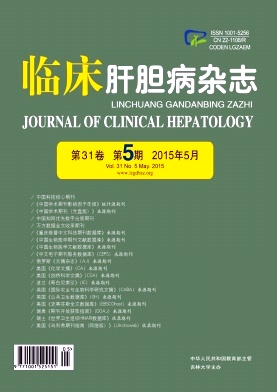Objective To provide a basis for clinical differential diagnosis of hemolytic jaundice based on laboratory analysis of the characteristics of this disease.Methods A total of 44 patients with hemolytic jaundice,who suffered from hereditary hemolytic disorders or hemolytic disorders with hepatitis virus infection and were admitted to Shajing Hospital affiliated to Guangzhou Medical University from June 2011 to December 2013,underwent multiple laboratory tests.Analysis was performed on the laboratory results,including hematological tests,biochemical markers,and glucose-6-phosphate dehydrogenase(G-6-PD) activity.Results Patients with G-6-PD deficiency-associated hemolytic jaundice might not have anemia.Most patients with thalassemia-associated hemolytic jaundice developed microcytic hypochromic anemia with mean corpuscular volume(MCV) and mean corpuscular hemoglobin(MCH) lower than normal values.Hemoglobin A2(Hb A2) was reduced in patients with alpha-thalassemia but increased in those with beta-thalassemia.Reticulocytes could be within or above normal limits.As for urine tests,urobilirubin was negative and urobilinogen level was normal or elevated.Biochemical results showed normal direct bilirubin(DB) and mildly or moderately increased indirect bilirubin(IB) that accounted for 70%-80% of total bilirubin(TB).Alanine aminotransferase(ALT),aspartate aminotransferase(AST),and alkaline phosphatase(ALP) appeared normal.For hemolytic jaundice patients complicated with hepatitis virus infection,a number of indices,including ALT,AST,ALP,gamma-glutamyl transpeptidase,TB,DB and IB,showed significant elevation.Conclusion For patients with jaundice of unknown origin or not attributed to hepatitis,as well as those with mild or moderate jaundice with IB accounting for 70%-80% of TB,hemolytic diseases should be considered,and G-6-PD activity test and Hb electrophoresis screening are recommended.













 DownLoad:
DownLoad: